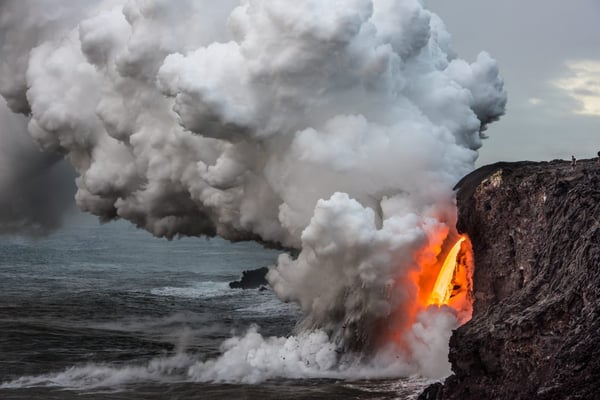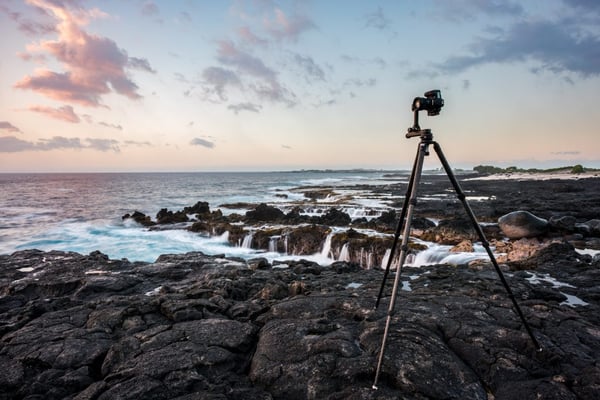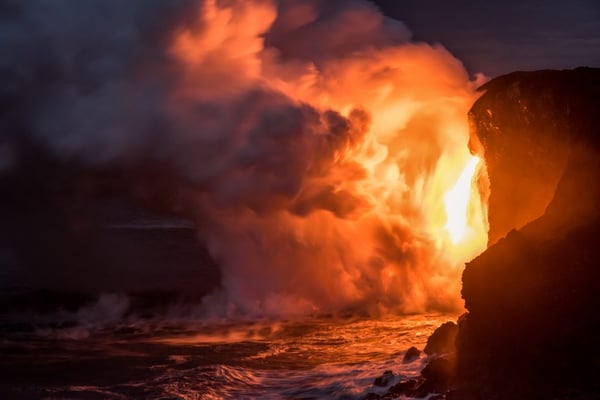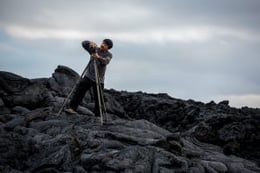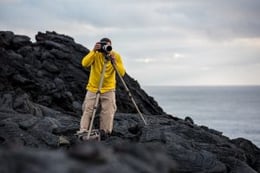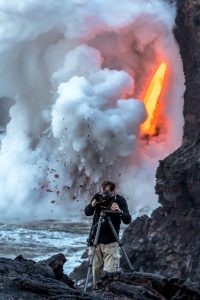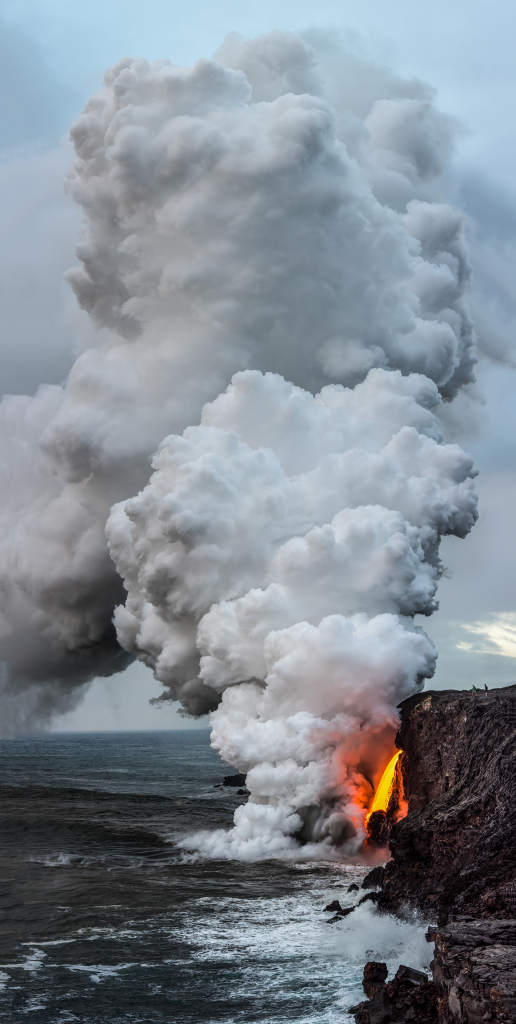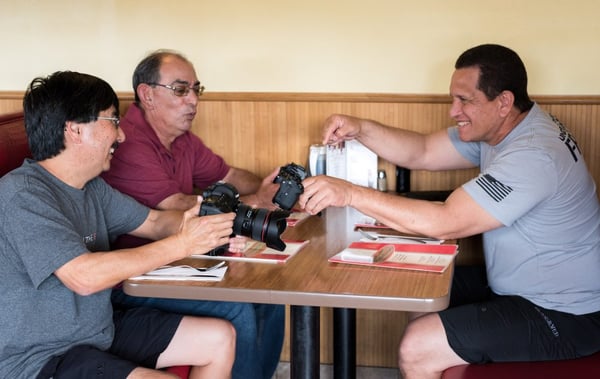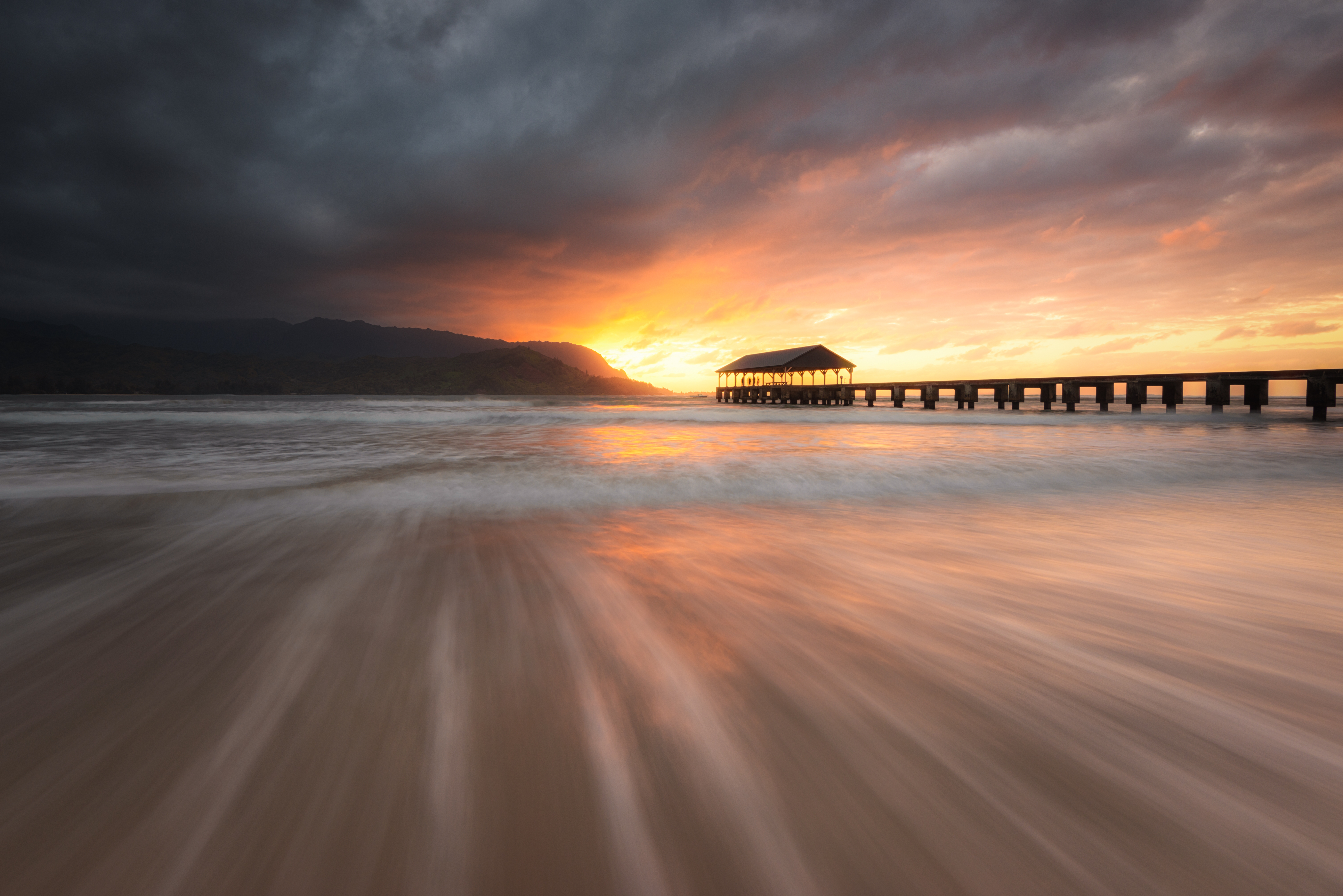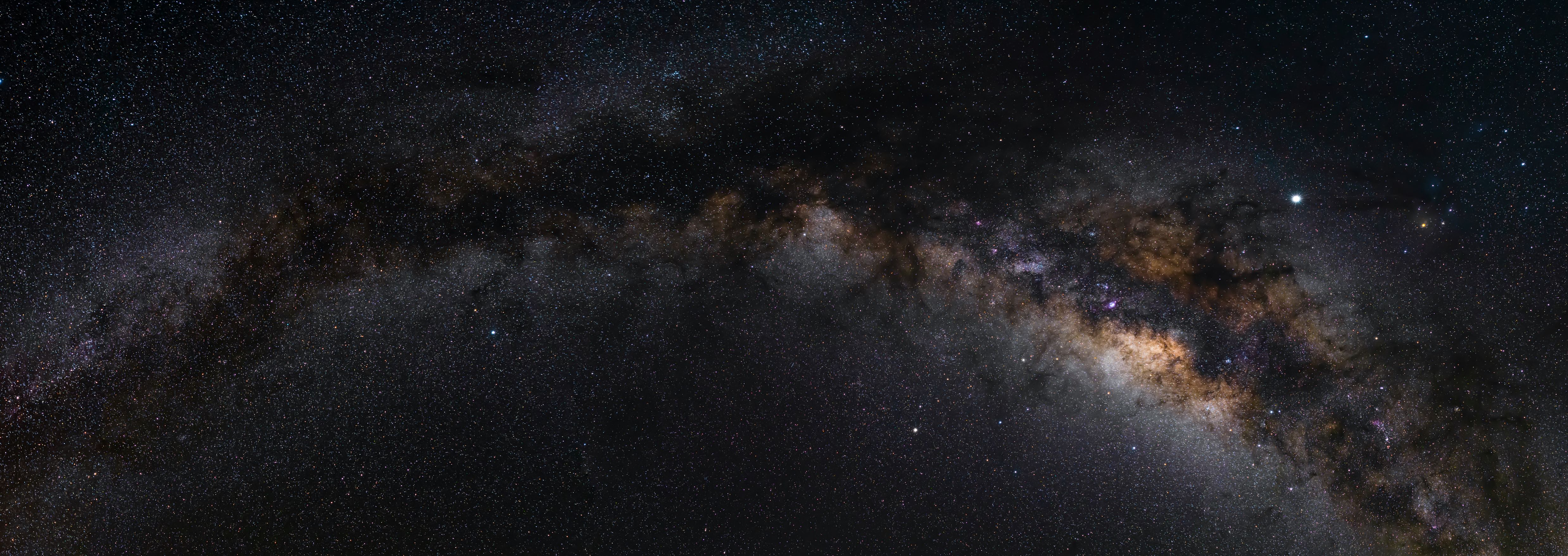Hawaiian Adventure To Kīlauea
Hawaiian Adventure To Kīlauea
Joseph M. Johnson Sr.
For ages the power and beauty of the Hawaiian volcanoes have been attributed to Pele the goddess of fire. Her immensely creative imagination carves, molds, and casts new landscapes at will. Those able to make the trek are treated to an ever-changing palate of molten ceramic creeping and surging across the island surface in open view or kept in suspense till the glowing magma bursts from the island’s flanks plunging into the deep Pacific with cataclysmic effect. Two incompatible liquids dramatically clash to impose their eminence and both spectacularly fail as molten lava explodes glassine shards to the depths and ocean blasts massive steam columns heavenward. Drama, peril, majesty, magnificence. Witness creation, behold God’s handiwork. Words are a pitiful substitute; even the best images are inadequate.
Please excuse my feeble attempt to express one hundredth part of my experience. Being near lava at ocean entry is a treasured life event and to have seen it multiple times never diminishes the impact. Kīlauea has been continuously erupting over 30 years, so the magnificent may become mundane – if it weren’t so spectacular! Just ask Bruce Omori and Tom Kuali’i who have probably hiked to and photographed the lava more than any beings on the planet.
Because I was staying on the West side of the Island in the Waikoloa area, my brother-in-law Fred and I started our journey about midnight. Saddle Road is now nicely paved over the mountain, so we shaved a bit of drive time versus going on the #19 ring road. I stopped for about 30 minutes to take a star shot, so we arrived in Hilo about 2:30 am to meet Bruce and Tom. After stopping for munchies at a convenience store, we drove out to the Kalapana area and started hiking around 3:30 am. Bruce and Tom own property in the area so we could park much closer than a normal tourist would be legally permitted, shaving a good 2 miles off the round-trip hike. To experience the full impact, one needs to arrive before sunrise. Though difficult to shoot and get anything nicely exposed except the lava, the pyroclastic scene is amazing. In the dark, you can capture ember trails from the lava explosions.
I described the first time I photographed a lava ocean entry with Bruce and Tom in an RRS blog article a few years ago. That time, six fingers of lava were drizzling into the Pacific across a couple hundred-yard face. A couple of months before I came this January, four entire acres of the bench where the lava was entering the ocean simply broke off and disappeared into the Pacific. Left behind was an 80-foot cliff and lava poured into the waters below from a tube that exited the cliff face about ten to fifteen feet from the top. The day I arrived the lava was gushing out of the tube with enough force to look like a “firehose” (local term). Impressive!
Bruce and Tom have always been very cautious around the lava, but even more so after the bench collapse. I’m totally confident in these two experts and have no qualms following their suggestions to a T. We took up positions about eighty yards from the spectacle. I shot primarily with the 70-200mm f/2.8 lens; Tom and Bruce were using 100-400 mm lenses. It’s very difficult to get the shots just right and I recommend trying lots of combinations. Bruce and Tom know what they’re looking for and are more precise in their decisions; they love to help and if not for my pride I would have done well to ask for more exposure advice. Mental note: rely on the pros for tricky exposure.
That morning I was particularly drawn to the steam plume and focused on capturing the entire scene. I tried to keep a boat or human in frame to give a sense of scale but it was challenging to get those extra elements exposed without completely blowing out the lava.
The lava flow is always changing. Because the Kīlauea eruption has been continuous for so long, we’ve been conditioned to believe it always will be. However, if a Hawaiian lava expedition is on your bucket list, I caution to not delay your trip too long. I strongly recommend Bruce and Tom as guides, but if they are booked up when you need to go, they can also recommend other reliable photo leaders. I do not recommend investing the time and money to make a special trip to shoot the lava and then trying to fly solo. Ensure your safety and maximize the best photo opportunities by hiring competent professional guides.
